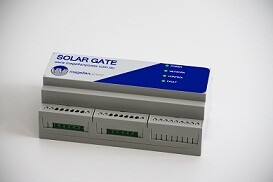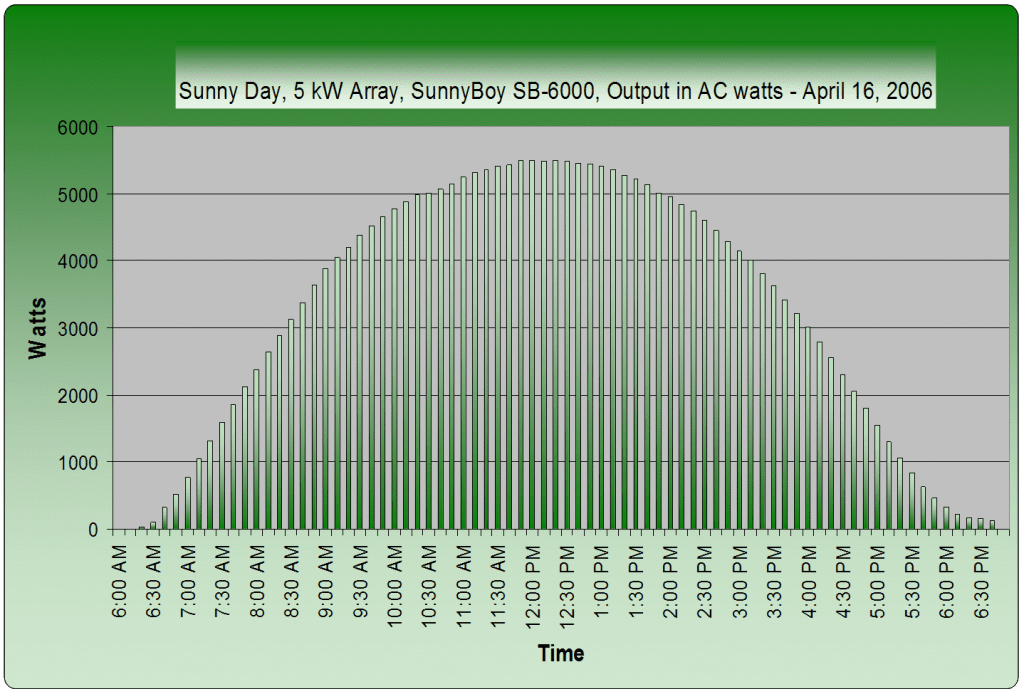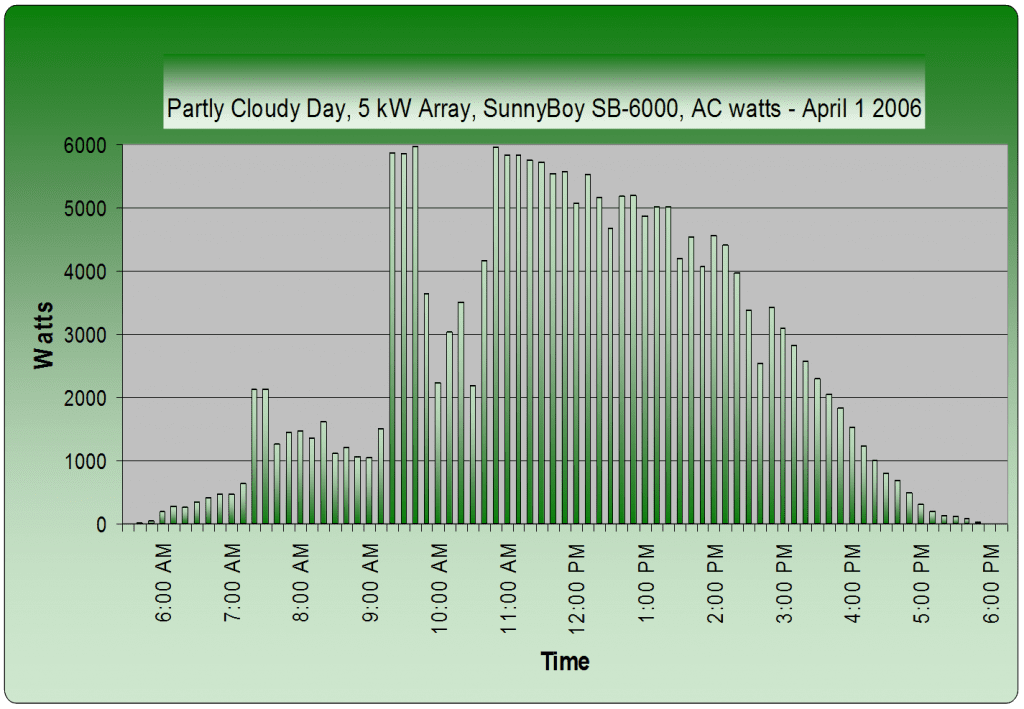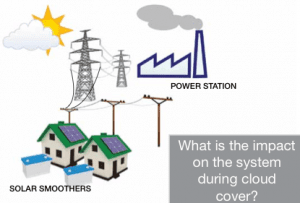When northwestern WA‘s electricity utility Horizon mandated that solar photovoltaic (PV) systems must regulate their power output, one of the first companies with the capacity to offer a viable technological solution to the problem was Magellan Power. The company’s Solar Smoother has enabled solar system installations to continue happening on the Horizon grid, whose relatively small size & spread-out nature makes it significantly less resilient to the power output fluctuations than other networks in Australia. More significantly, Magellan’s devices, which are in essence ‘proto’ energy storage systems, promise to be a stepping stone towards an inevitable future in which household energy storage is commonplace.
Why is solar panel output smoothing necessary?
One of the key challenges with solar photovoltaic (PV) technology (as detractors are wont to point out) is its intermittency. Electricity production from a given solar system fluctuates throughout the day as the angle of the sun changes. This is not an insurmountable obstacle, however, as the sun’s movements are predictable. The graph below is an example of solar PV system output on a cloudless day. As you can see, power output rises steadily until around midday, then begins to decline gradually.
Solar system power output on a cloudless day. (Graph via GreenDream.biz.)
The more critical and trickier issue is that of shading by clouds, whose movement cannot be mapped out ahead of time in fine detail. Some days, for example, may be inclement as a whole, with steady cloud cover. Besides the obvious downside of reduced power output resulting from this situation, it is not necessarily as big a problem as the days when clouds move through the sky, coming between the sun and a solar panel array for seconds or minutes at a time. This results in the aforementioned peaks and troughs in power output.
Actual solar PV system power output on a partially cloudy day–note the peaks and troughs. (Graph via GreenDream.biz.)
In both grid-connect and off-grid systems, the troughs need to be filled with electricity from somewhere in order to avert a blackout. With off-grid, stand-alone power systems, it’s usually a diesel generator (or sometimes a battery bank) that fills the gap to ensure that power supply isn’t lost. With grid-connect systems–either rooftop solar systems for homes or solar farms–it’s the electricity grid. In both cases, compensating for the sudden loss of solar output necessitates quickly bringing more capacity online and then quickly switching it off again. For off-grid systems this can result in excessive wear on gensets and the threat of blackouts, while in the case of grid-connected systems it can mitigate the cost savings and carbon emissions reductions that solar panels would otherwise promise.
In the case of ‘micro-grids’ such as those in the Horizon network, the worst of both worlds may apply–excessive wear on the large diesel generators which are the mainstay of power production there, a decrease in the overall cost savings and CO2 abatement benefits of solar PV, and an increased threat of power failures. Because it is easier to improve the resilience of solar PV systems to dealing with the sudden fluctuations in sunlight is more controllable than the movement of clouds, Horizon Power mandated that all new solar installations on its grid be equipped with technology to smooth out the solar production curve and give ample time for diesel generators to ramp up should weather conditions suddenly change.
Magellan Power’s Solar Smoother
Magellan Power has a 20+ year history in the power electronics industry designing and manufacturing AC and DC power systems for both backup and grid-connect applications. Based on its success in these fields, Magellan was was able to develop the Solar Smoother, a device to even out the peaks and troughs of solar PV system power production. Solar Smoothers are in effect small-scale energy storage systems which switch on when PV systems cut out due to partial or total shading from clouds or other obstructions. Its main uses to date have been in areas where grid stability is fragile.
Magellan has been involved in over 1000 substation projects Australia-wide, and has worked with utilities like Queensland‘s Ergon on other types of projects, including Solar Schools. The energy storage system market is set to see rapid expansion according to some predictions, and if they bear themselves out Magellan will have a leg-up in Australia as a company with real experience in the grid-connect solar storage industry.
Magellan Power’s Solar Smoother in a grid-connected solar system. (Image via Magellan Power.)
Other products from Magellan
Magellan Power manufactures a number of other products that deal with renewable energy systems, including utility-scale inverters and battery chargers. In addition to these, the company also offers a unique device–the Solar Gate–which coordinates with 3rd party inverters in order to ensure that excess solar electricity is diverted to ‘non-essential’ loads instead of exporting it to the grid. This will allow those who wish to invest in a solar PV system and get the most out of it by using all of the power it produces themselves–a goal in any state that offers a feed-in tariff rate lower than the cost of retail electricity, i.e. virtually every state in Australia. It will also make it easier to receive grid connection approval in areas where utilities are concerned about high penetrations of solar PV (such as customers of NSW’s Essential Energy).
 Magellan Power’s Solar Gate (Image via Magellan Power.)
Magellan Power’s Solar Gate (Image via Magellan Power.)
About Magellan Power
Company headquarters: Bibra Lake, Western Australia
History in the industry: Magellan Power has been designing and manufacturing power equipment for on and off-grid energy systems since 1992.
Contact information: Phone: +61 (08) 9434 6621 – Email: sales@magellan-power.com.au – Web: www.magellanpower.com.au
© 2013 Solar Choice Pty Ltd


